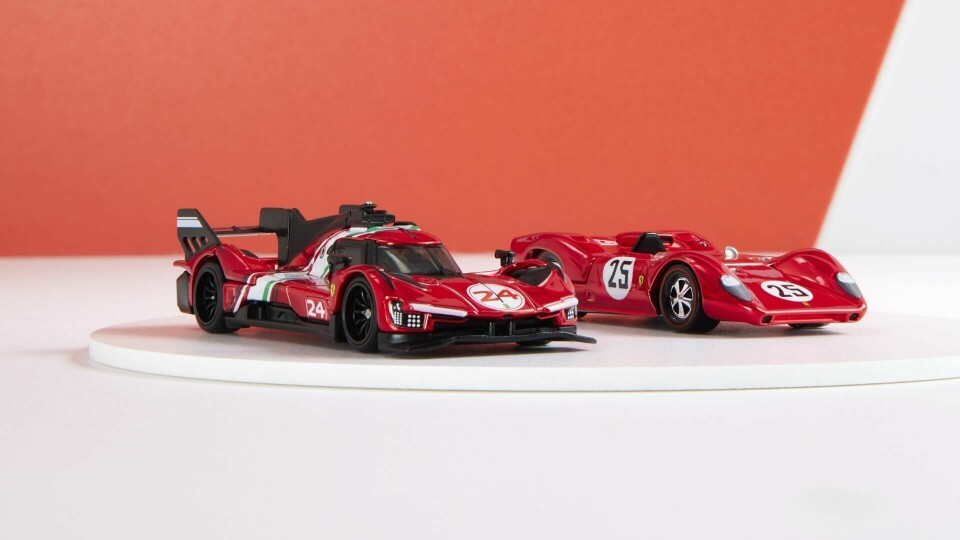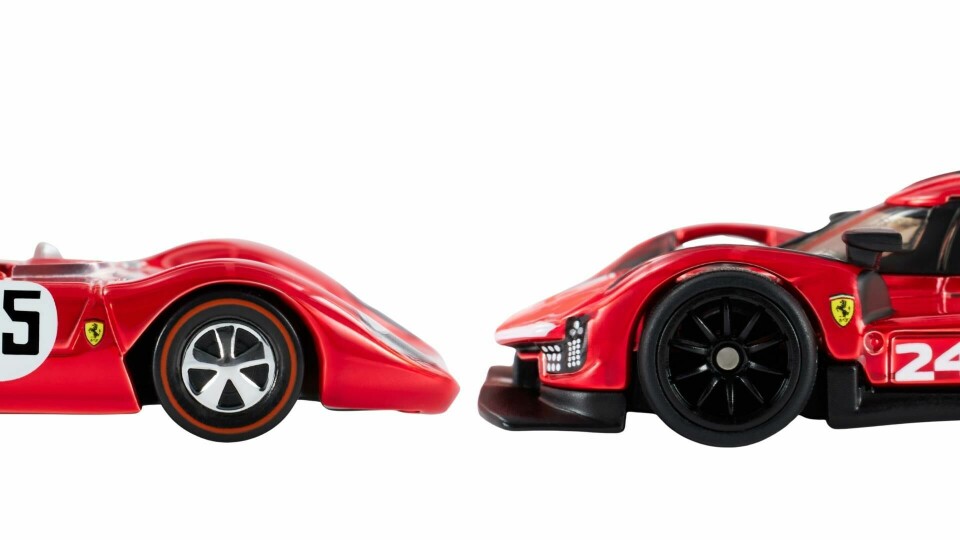
The art of immortalising Ferraris in 1:64 scale Hot Wheels models
It’s been more than 10 years since Hot Wheels has worked with Ferrari to bring the Italian manufacturer’s models to children (and adults) in handheld form. Now the two brands have collaborated to launch a new range of diecast models
We often talk about the intricacies of full scale car design but when you only have four components to play with, it’s tough to pack in the necessary details to stay true to the original.
To find out how the Hot Wheels team shrinks down life sized cars to 1:64 scale, Car Design News caught up with Ted Wu, Senior Vice President, Global Head of Design, Vehicles and Building Sets at Mattel at Maranello to find out more about the 18 month project.
CDN: How do you go about scaling down a real life car?
TW: It’s a lot of work and it’s more work than you probably think, it’s not just taking the car and shrinking it down 64 times. There’s a lot of design work that goes into making a car look right at that scale. One of the things that we look at is, when the car is at 1:64 scale in the palm of your hand, does it evoke the same emotion? Is it translating the idea of speed? Does it have the aggressiveness that that car has? Are the angles and stance of the vehicle correct? If you just shrink a car down 64 times, it loses a lot of that essence.
CDN: How do you decide which features are important and are there any that you need to lose due to the scale?
TW: It’s individual to every car and you ask, what is it that makes this car? We try our best to not lose any details, of course. We want to make sure they’re as authentic and real as possible. There are certain things where, because of the form factor and the audience, we will have to make some changes. For example, in our basic assortment that you might see at a grocery store, the wing on the F40 might be beefed up a little bit so that when a kid is putting it through a booster or shooting it across the room on a track it doesn’t break off.
CDN: How do you choose which colors to use?
TW: With Ferrari, obviously, they have a bevy of red colors that are just so essential to the line. We’ve worked with them to make sure we’re colour matching their exact vehicles and exact car colours. We’re staying very true to Ferrari red, and everything we’re doing is as expected, but we felt that was really important. As the partnership goes on, I think we’ll be able to explore different areas, but out the gate we felt like it was important to really lean into the heritage of the red.
We gave the collector’s edition a special red Spectraflame paint that’s a candy coating and a throwback to what Hot Wheels used to do back in the day. Of course, we picked Ferrari red and this is the brightest Spectraflame paint that we’ve got. We created a whole new paint process, the car is silver plated then painted, it really brings out the shine.
When you get the car in your hand, something that looks right on screen doesn’t always look quite right in real life, so you’re pushing and pulling and moving things around trying to get it exactly right
CDN: What tools do you use to design the vehicles?
TW: A lot of the time we get CAD data from the automotive manufacturers so we have files to work with. There are occasions, not on this project, but there are occasions where we’ll ask people to scan vehicles with a 3D scanner. There’s a lot of state of the art equipment that our design team has at their disposal. Getting the car into 3D is important, sometimes we’ll work off a 2D reference as well.
The 3D design is what’s used to send to Ferrari so they can review the product, as well as for us to print out 3D prototypes. A lot of rapid prototyping is done in our facility in Los Angeles, where we can print cars in a matter of hours. When you get the car in your hand, something that looks right on screen doesn’t always look quite right in real life, so you’re pushing and pulling and moving things around trying to get it exactly right.

I think this is some of the best work that the team has done though, and I’m really proud of what we’ve come up with
CDN: What were the key challenges for this project?
TW: Being able to execute for various price points. We have everything from our Hot Wheels basic range up to very high end adult collector vehicles and everything in between. Every one of these price points represents a unique challenge.
At the lower end, with the £2.30 car you’re trying to get all the details you can cram into something that, from a value standpoint, has a tonne of value, but we don’t have a lot of money to play with in terms of the actual car. There’s four pieces to work with: a body, chassis, interior and the wheels. Making sure you’re capturing the essence of an F50 or the SF90 Stradale, with just these parts is a challenge in itself.
Meanwhile, on the other end, you have more parts and pieces to play with, you can get more details, but also in the same vein you have to be able to do it in a way that’s manufacturable at a mass scale. So all that is to say, no matter what price point at this scale, it’s always a challenge. I think this is some of the best work that the team has done though, and I’m really proud of what we’ve come up with.











